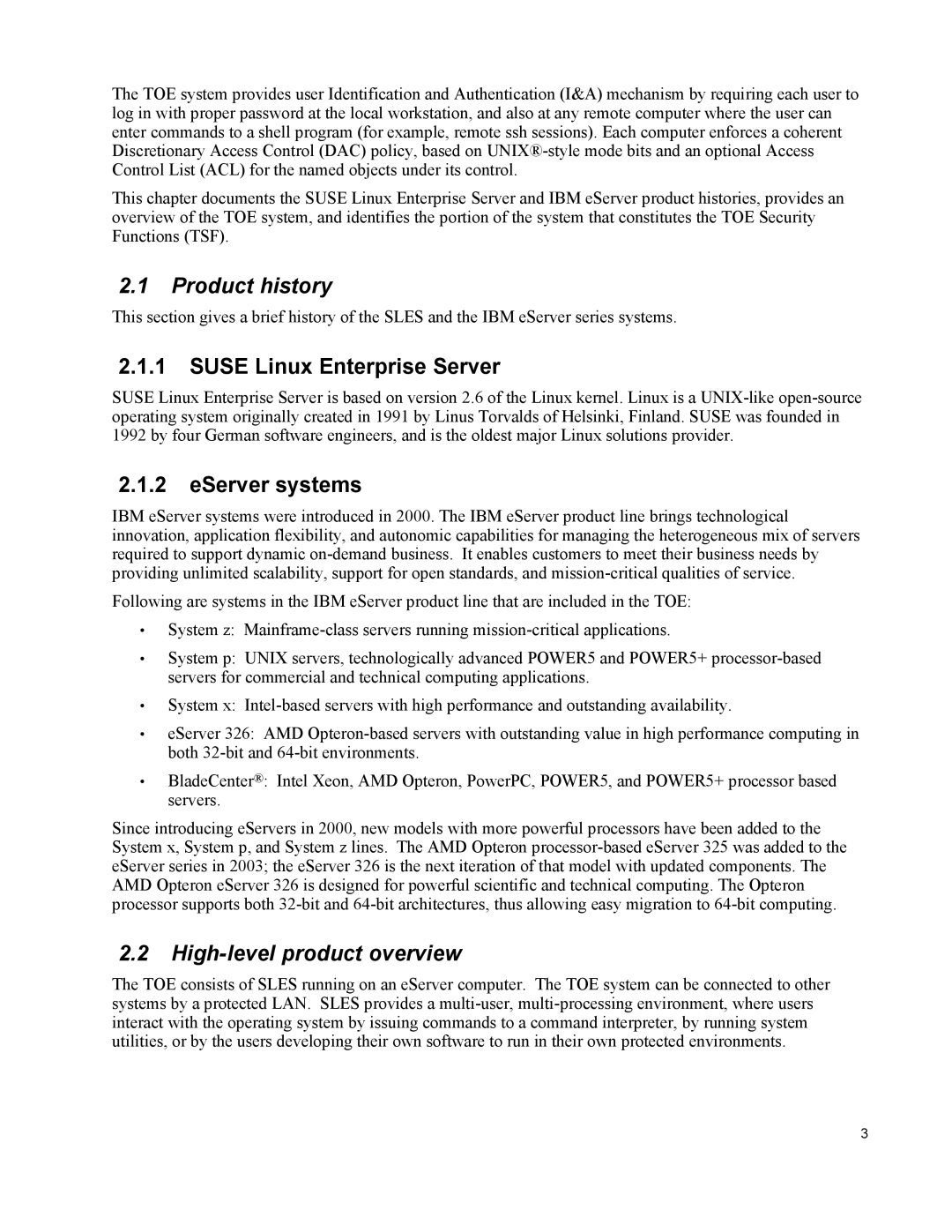The TOE system provides user Identification and Authentication (I&A) mechanism by requiring each user to log in with proper password at the local workstation, and also at any remote computer where the user can enter commands to a shell program (for example, remote ssh sessions). Each computer enforces a coherent Discretionary Access Control (DAC) policy, based on
This chapter documents the SUSE Linux Enterprise Server and IBM eServer product histories, provides an overview of the TOE system, and identifies the portion of the system that constitutes the TOE Security Functions (TSF).
2.1Product history
This section gives a brief history of the SLES and the IBM eServer series systems.
2.1.1SUSE Linux Enterprise Server
SUSE Linux Enterprise Server is based on version 2.6 of the Linux kernel. Linux is a
2.1.2eServer systems
IBM eServer systems were introduced in 2000. The IBM eServer product line brings technological innovation, application flexibility, and autonomic capabilities for managing the heterogeneous mix of servers required to support dynamic
Following are systems in the IBM eServer product line that are included in the TOE:
•System z:
•System p: UNIX servers, technologically advanced POWER5 and POWER5+
•System x:
•eServer 326: AMD
•BladeCenter®: Intel Xeon, AMD Opteron, PowerPC, POWER5, and POWER5+ processor based servers.
Since introducing eServers in 2000, new models with more powerful processors have been added to the System x, System p, and System z lines. The AMD Opteron
2.2High-level product overview
The TOE consists of SLES running on an eServer computer. The TOE system can be connected to other systems by a protected LAN. SLES provides a
3
